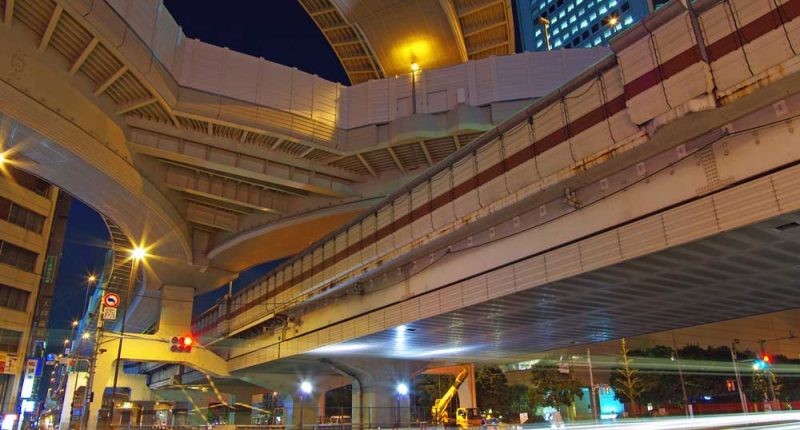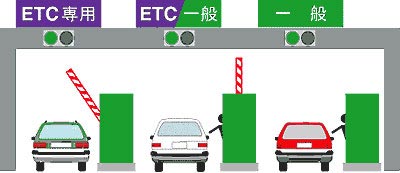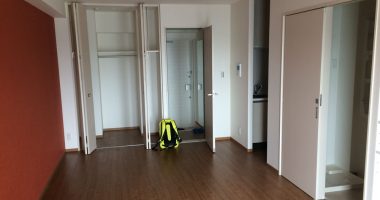If you are living in or visiting Tokyo you may at some point need to use the Shuto Expressway (首都高) or “Capital Expressway”, a network of roads that fly over the traffic on stilts or race under it through a warren of tunnels. It is a nightmarish 320km marble run of sharp curves, on-ramps, off-ramps, and multi-lane merges that registers use by approximately one million cars every month. I have driven on it many times on my motorbike, and have uttered more than a handful of expletives due to missing the correct off-ramp and adding another 20 minutes to my journey, so the below is as much for my benefit as anyone else’s.
What is the shutoko?
The Shuto Expressway is known as “shutoko” in Japanese, so I will use that term from hereon in. As I said, it refers to a network of expressways—not only single road. Despite being called the capital’s expressway, this network in fact extends into neighbouring Saitama and Kanagawa. The heart of the system is the 14.8km Inner Circular Route (都心環状線) that whirls past Tokyo Tower and loops Tokyo Imperial Palace and much of Chuo Ward. The Central Circular Route (中央環状線)—the Yamanote Line of Tokyo’s Shuto Expressway network—skirts the center of Tokyo and is made whole by the Bayshore Route (湾岸線) near Odaiba. The other lines such as the Ikebukuro Line (池袋線) and Meguro Line (目黒線) are the arteries that bring the flow of traffic into and out of central Tokyo.
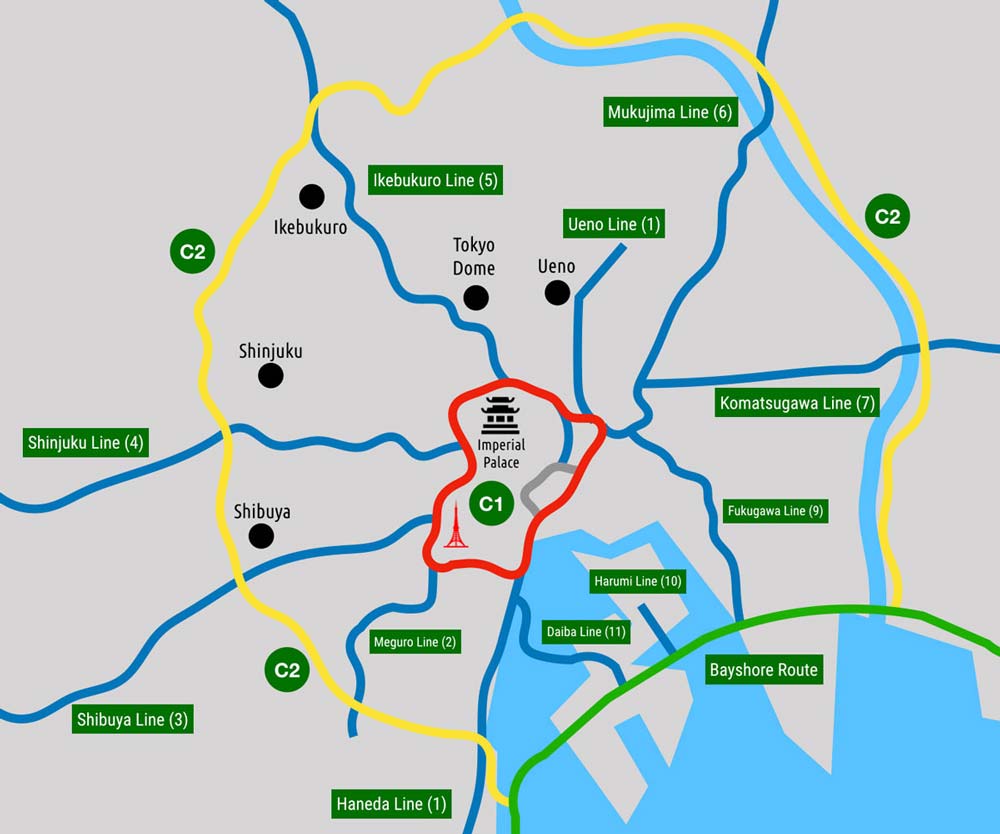
As you can see, all of these lines do have specific names, but between looking at GPS instruments and keeping your eye on the traffic, it’s difficult for anyone to fully take in all the information on the road signs, and so a numbering system is also employed. The Inner Circulate Route is called C1, the Central Circular Route C2, the Meguro Line No. 2 and so on. All lines are owned and operated by Metropolitan Expressway Co., Ltd. (首都高速道路株式会社) so unlike the capital’s train network you do not need to exit and enter toll gates to change from one expressway to another.
Can’t I just use GPS navigation?
Yes, but for the most part the shutoko is a two-lane, giant hamster tube that constantly swings left and right, and so you need to have your eyes on the road—a rough idea of where you’re going without relying entirely on your navigation will mean you can better do so. Furthermore, a substantial portion of the central roads are underground where GPS navigation is lost (this certainly applies to GPS on smartphones if you’re relying on Google Maps), and it takes a few moments to find its bearing again once you exit the tunnels, by which time you may have missed your turning.
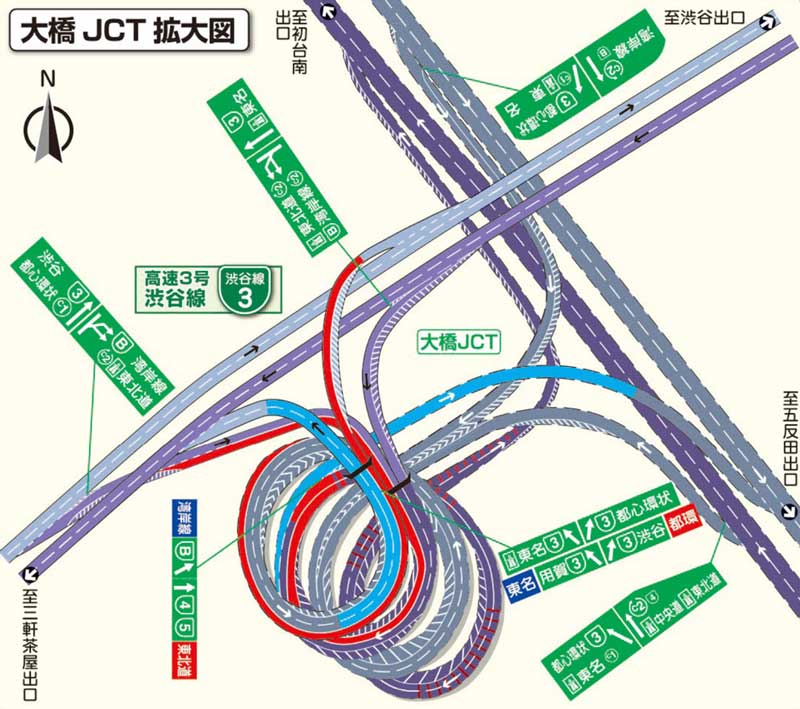
Moreover, because in central Tokyo the shutoko often runs directly over the main road below, GPS tracking systems sometimes get confused and think you’re on the expressway when you’re in fact driving beneath or vice versa. It’s only when the only roads stop shadowing each other that the GPS gets back in sync and starts being useful again.
How do I use the shutoko?
You enter and exit the shutoko at the junctions along each line. These are called “JCT” and each has its own name (no numbering system for the junctions). In the centre of Tokyo where the shutoko is often flying overhead, these entrances are on-ramps from the main roads that can look like any other road, but above each there will be a green sign with the kanji 首都高 (shuutokou) written on and a few other warning signs in white. Before you join the expressway itself there will be a series of toll gates. I’ll get to the cost of using the shutoko below, but there are two ways to pay:
- Cash
- Automatically via the ETC (Electronic Toll Collection) system
The latter is like a Suica or Pasmo for the highways in Japan, allowing you to pass through the toll gates almost seamlessly (the reaction time of the barrier is such that you can cruise through at 20kmph). There are three types of toll gates:
- ETC only【ETC専用】
- ETC / Cash【ETC・一般】
- Cash only【一般】
Drivers must take extra care that they enter and exit via the correct gates. ETC is written just so, but the cash only tolls gates are only in Japanese. They are clearly distinguishable by colour, however. ETC is purple; cash only are green; and the dual gates are both colours.
How do I get an ETC card?
Rental car companies will give you the option of borrowing an ETC card (obviously you will need to bear the cost of using it). If you live in Japan and want your own, the most common way is to apply through your credit card company. All payments at the toll gates will then automatically appear on your credit card statement—you don’t have to worry about topping up the card or running out of balance. Note that you will also have pay for a specialist card reader to be attached to your vehicle. These can be purchased for ¥6,000-12,000 and attached to the dashboard, but work out to be more costly for motorcycles because you’ll also need to pay to have a power cable running to the device (I think I paid about ¥25,000 for the card reader with fitting).
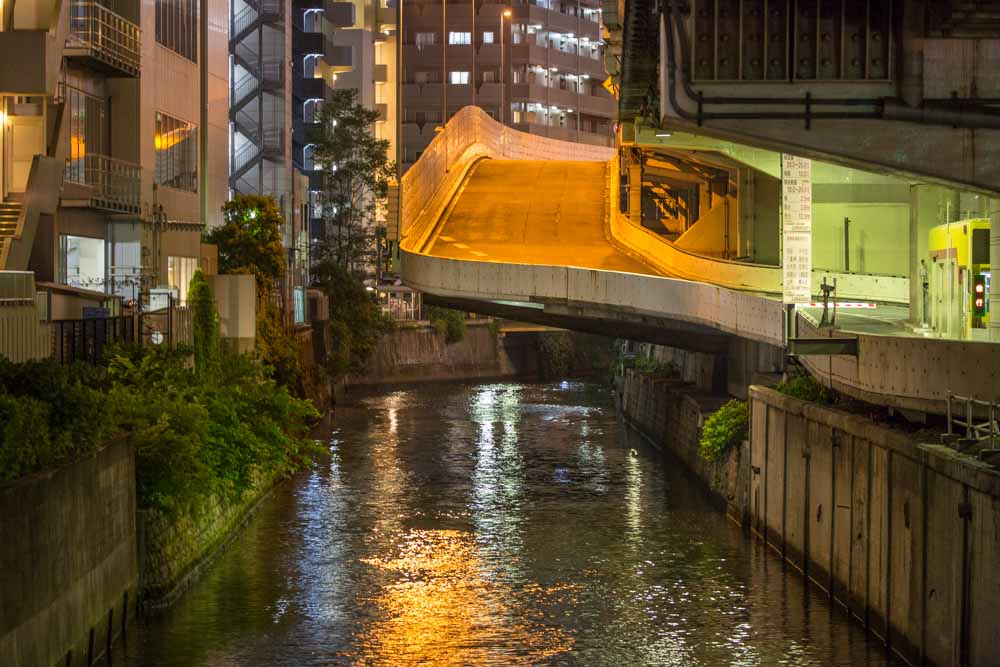
How expensive is the shutoko?
¥100 for every kilometer travelled. However, there are also minimum and maximum charges that apply. These differ by class of vehicle, but for cars they are ¥300 and ¥1,300. Essentially, you will not be charged more than ¥1,300 for any single journey. However, in the case of cash payments the distance travelled is not calculated and users are simply charged the maximum amount at the entrance toll gate. To give an example, travelling on the shutoko from Shinjuku to Ginza would cost ¥540 using ETC and ¥1,300 if paid for with cash. Moreover, ETC users can enjoy discount rates for usage during certain hours of the week, during holidays, or late at night which do not apply to cash payments.
What are the speed limits?
The speed limit on most highways in Japan is 80 kmph (although almost all vehicles are going closer to 100 kmph). On the shutoko, however, only the Bayshore Route is 80 kmph, all other sections are 60 kmph with the exception of the Inner Circular Route where the speed limit is further lowered to 50 kmph.
What else do I need to know?
Motorcycles with pillion passengers are not allowed within most sections of the lines within the Central Circular Route (C2), and pedestrians, bicycles, and motorcycles under 126cc are strictly prohibited from entering (as they are on other highways in Japan).
